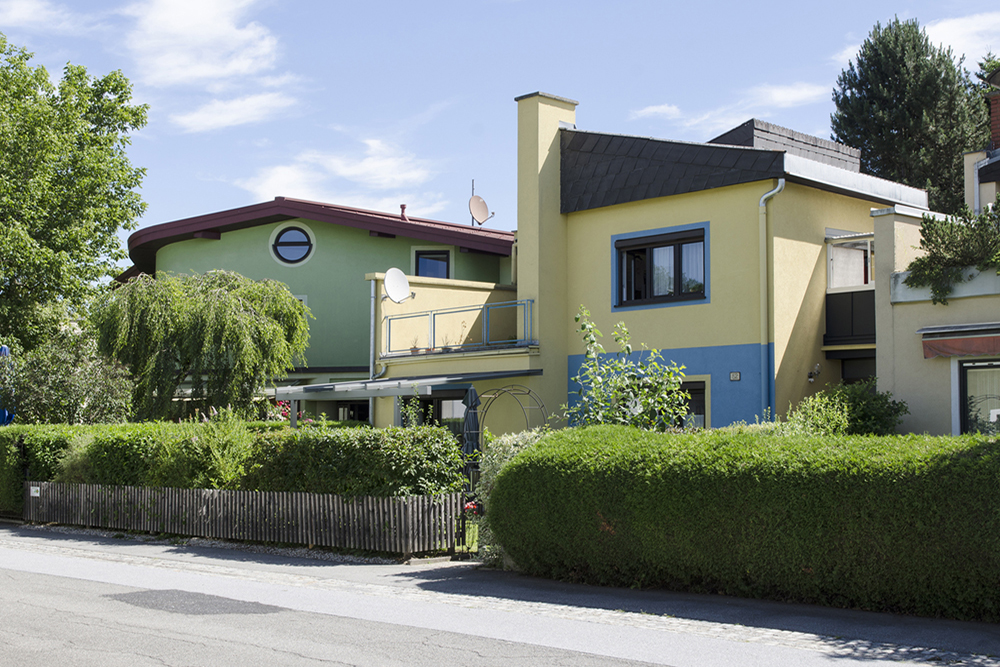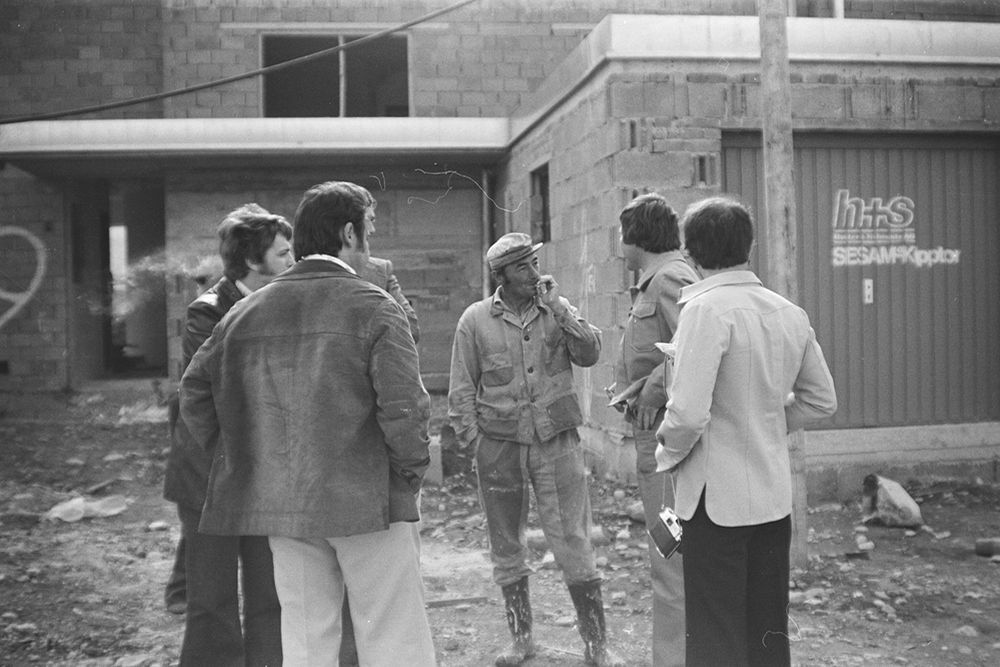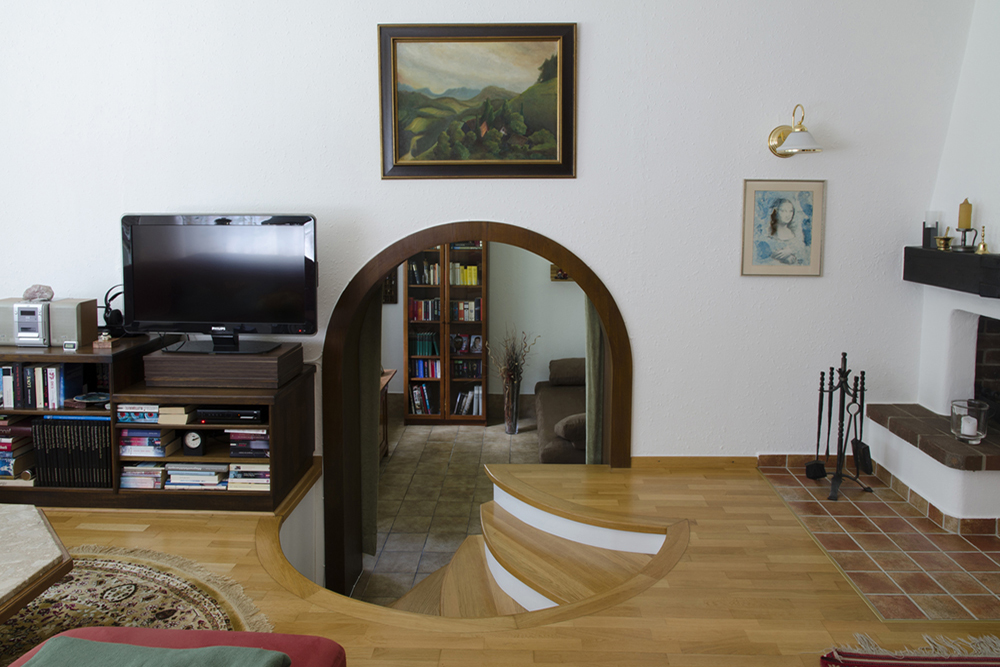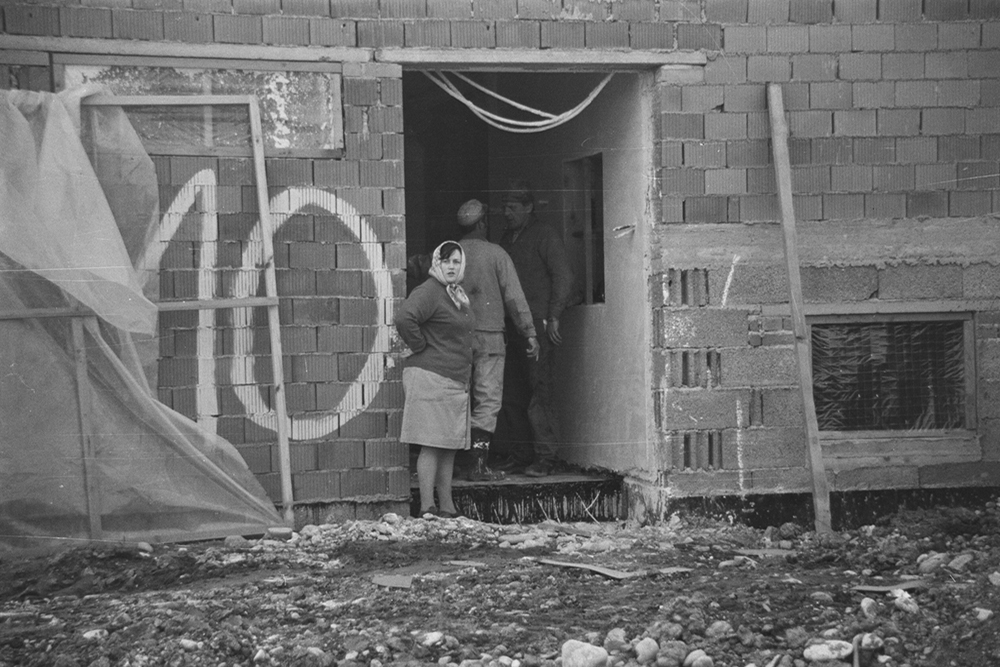









My Dreamhouse is not a House I
2017, 80-parts slides seriesCommissioned work for the exhibition Graz Architecture, Kunsthaus Graz, curated by Barbara Steiner, 2017
b/w archive images: loan Doris Pollet-Kammerlander
Exhibition views:
MMKK Klagenfurt as part of the exhibition Domenig Dimensional, 2022
My Dreamhouse is not a House (Part I) deals with the residencial project Eschensiedlung in Deutschlandsberg (AT), one of the first Austrian publicly funded participatory social housing projects by architect Eilfried Huth from the 1970s.
The working method he developed provided a form of collaboration where architects and prospective residents could meet on equal terms. The results from these processes were single, occupant-designed homes within residential blocks where strong communities and friendships came to develop.
Julia Gaisbacher explores how long-time and newer residents live in the individually planned houses, 45 years on. She also asks how the residents’ notions of the good life may have changed or if the subtle room portraits reveal constant housing needs.
Extensive research, interviews with residents of Eschensiedlung and Eilfried Huth, and the sociologist Doris Pollet-Kammerlander, who was involved in the planning phase, form the basis of this photographic documentation. Photographs from the planning and construction phase included in the slide show serve as historical reference points. By interweaving the different timescales of the planning and construction phase, the residents’ moving in and a survey of the status quo 45 years on, Gaisbacher uncovers hidden perspectives on participatory housing construction and living as an expression of social structures.
Please also see the other project parts
My Dreamhouse is not a House (publication)
My Dreamhouse is not a House II
My Dreamhouse is Daydreams (documentary film)
The working method he developed provided a form of collaboration where architects and prospective residents could meet on equal terms. The results from these processes were single, occupant-designed homes within residential blocks where strong communities and friendships came to develop.
Julia Gaisbacher explores how long-time and newer residents live in the individually planned houses, 45 years on. She also asks how the residents’ notions of the good life may have changed or if the subtle room portraits reveal constant housing needs.
Extensive research, interviews with residents of Eschensiedlung and Eilfried Huth, and the sociologist Doris Pollet-Kammerlander, who was involved in the planning phase, form the basis of this photographic documentation. Photographs from the planning and construction phase included in the slide show serve as historical reference points. By interweaving the different timescales of the planning and construction phase, the residents’ moving in and a survey of the status quo 45 years on, Gaisbacher uncovers hidden perspectives on participatory housing construction and living as an expression of social structures.
Please also see the other project parts
My Dreamhouse is not a House (publication)
My Dreamhouse is not a House II
My Dreamhouse is Daydreams (documentary film)
